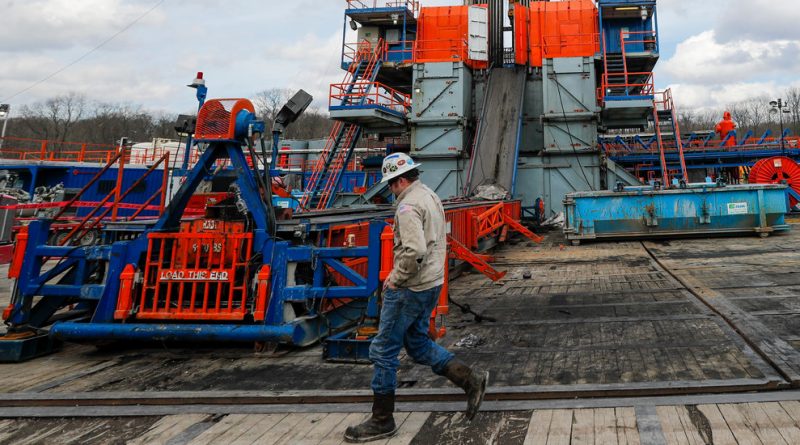Global Methane Emissions Reach a Record High
[ad_1]
Global emissions of methane, a potent greenhouse gas, soared to a record high in 2017, the most recent year for which worldwide data are available, researchers said Tuesday.
And they warned that the rise — driven by fossil fuel leaks and agriculture — would most certainly continue despite the economic slowdown from the coronavirus crisis, which is bad news for efforts to limit global warming and its grave effects.
The latest findings, published on Tuesday in two scientific journals, underscore how methane presents a growing threat, even as the world finds some success in reining in carbon dioxide emissions, the most abundant greenhouse gas and the main cause of global warning.
“There’s a hint that we might be able to reach peak carbon dioxide emissions very soon. But we don’t appear to be even close to peak methane,” said Rob Jackson, an earth scientist at Stanford University who led the research by the Global Carbon Project. “It isn’t going down in agriculture, it isn’t going down with fossil fuel use.”
Scientists warn that if greenhouse gas emissions continue to rise on the current trajectory, the world has little hope of limiting global warming to 1.5 degrees Celsius, or even 2 degrees Celsius. If the world warms beyond that, tens of millions of people could be exposed to life-threatening heat waves, freshwater shortages and coastal flooding from sea level rise.
Methane, a colorless, odorless gas that is the main component of natural gas, is a powerful greenhouse gas that traps the sun’s heat, warming the earth 86 times as much as the same mass of carbon dioxide over a 20-year period.
And while the coronavirus pandemic led to a large temporary drop in carbon dioxide emissions as much transportation and industry ground to a halt, there are signs methane emissions have not dropped nearly as much, Dr. Jackson said.
“We’re still producing food. We’re still producing natural gas,” he said. “If we continue to release methane as we have done in recent decades, we have no chance.”
Overall, global methane emissions are up 9 percent from the early 2000s, according to the latest findings, and human activity is responsible for more than half of those emissions. Raising livestock like cattle and sheep, which burp copious amounts of methane, are a major source of methane emissions, as is coal mining, which releases methane from deep within the rock.
Methane also leaks from oil and gas wells, pipelines, distribution lines and even the gas stoves in our homes, and from landfills. The rest comes from natural sources, like wetlands.
Of the anthropogenic emissions, agriculture make up about two-thirds, while fossil fuels contribute most of the rest. The increase in emissions between 2000-17, though, came equally from agriculture, which rose nearly 11 percent from the 2000-06 average, and fossil fuels, which rose nearly 15 percent.
Methane emissions grew quickest in three regions: Africa and the Middle East; China; and South Asia and Oceania, including Australia. A surge in coal use caused methane emissions to jump in China, while population growth and rising incomes have led to more emissions elsewhere, the scientists said.
The United States has led a significant rise in methane emissions from North America. About 80 percent of the total increase for the region was driven by fossil fuels, underscoring the environmental fallout of America’s shale boom.
Curbing methane emissions will require better plugging leaks and other fugitive emissions from oil and gas infrastructure, like wells and pipelines, which are a major source of methane emissions, the scientists said. It will also require an overhaul of agriculture, especially cattle and rice farming, two large sources of methane emissions.
A big question mark is the contribution of natural sources of methane emissions, like wetlands, mud volcanoes and permafrost. Natural methane emissions have been relatively unchanged from 2000-17, albeit with large uncertainties.
There are fears, for example, that thawing permafrost in the Arctic could start releasing large quantities of methane into the atmosphere, further accelerating climate change. For now, scientists have found little evidence of increasing methane emissions in the Arctic, though they warn that could change as warming intensifies. Scientists have warned that the Arctic region is warming at twice the rate of the rest of the planet.
“The key message is that methane concentrations and emissions are still rising, and we know the main cause,” said Marielle Saunois, a scientist at the Laboratory for Climate and Environmental Sciences in France, and a member of the research team. “This is not the right path.”
